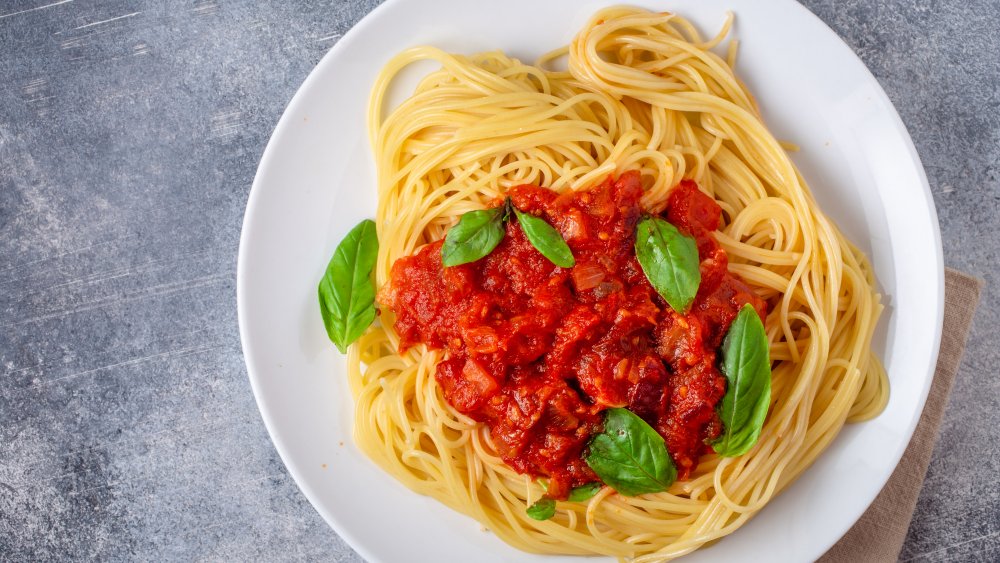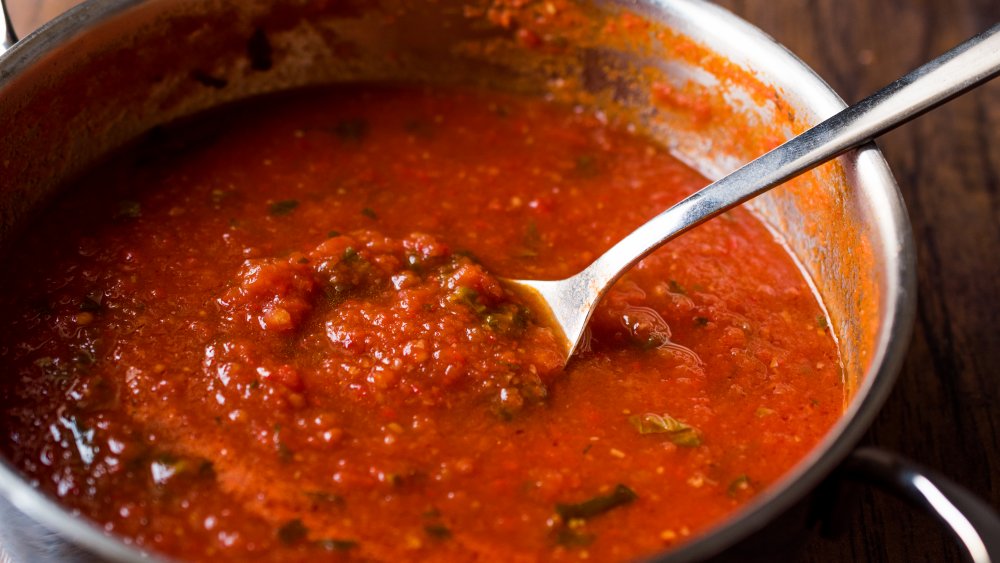The Real Difference Between Pomodoro Sauce And Marinara Sauce
If you're a pasta lover, then you know there's nothing more comforting than a huge plate of spaghetti smothered in red sauce — but if you're familiar with Italian cooking, then you also know that there are a few different types of red sauce to choose from. Marinara and pomodoro sauce are both popular, and at first glance they almost seem like the exact same thing. However, there are a few subtle differences that make marinara and pomodoro sauce distinct.
A good marinara sauce starts with tomatoes, olive oil, garlic, basil, and salt, according to Chowhound, and the ingredients for pomodoro sauce are very similar (though you might see pomodoro sauces with extra ingredients like carrots or onions). While the sauces have similar ingredients and even similar flavors, there are two ways you can fairly easily distinguish a pomodoro sauce from marinara. The first is consistency; according to Chowhound, you'll usually cut up tomatoes to make both sauces, but mince them a little more finely for a pomodoro than you would for a marinara. The result is a loose, chunkier sauce when you make marinara, and a smooth, thick pomodoro. Think of pomodoro as having a consistency similar to pizza sauce (after all, it's sometimes spread on pizzas), while marinara has bigger pieces of tomato.
Differences in cooking pomodoro and marinara sauce
The other major difference between the two sauces is how long they typically cook. According to Paesana, a company that produces homemade pizza and pasta sauces, marinara sauce usually spends less time simmering than pomodoro sauce. Less time in the pot also contributes to marinara's signature texture — since it doesn't cook as long, the tomatoes don't break down as much, creating larger chunks of tomato in a loose, runny sauce.
A true pomodoro sauce, however, needs much more time on the stove. According to Chowhound, pomodoro sauce can simmer for hours to develop its rich flavor (though you can find recipes that will whip up a batch much quicker than that). The result is a dark red sauce that's almost burgundy in color, with a smooth, thick texture (via Paesana). Whichever red sauce you decide to make (or order at a restaurant), they're both delicious tomato-based sauces that pair perfectly with a plate of pasta. Don't forget to include some garlic bread on the side so you can soak up every last drop!

